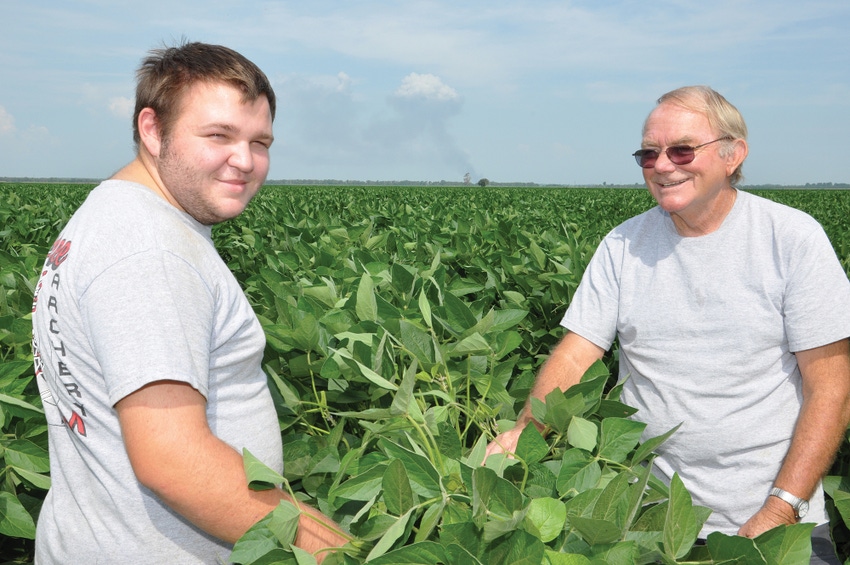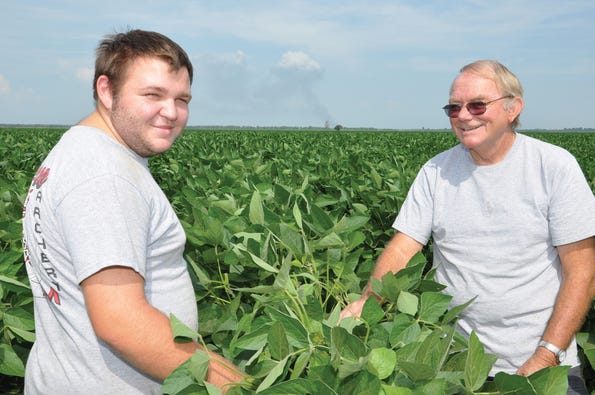
Why did the Dunnahoes plant cotton this spring?
Jamie and Shirley Dunnahoe made plans to not plant any cotton on their farm this spring, but weather changed their minds, and they wound up with 1,000 acres. They did plant corn for the first time ever, and late in the season, their yield expectations were high.

Cotton is proving a hard habit to break for Shirley and Jamie Dunnahoe, although it’s sharing a lot more of the spotlight with other crops these days.
For example, this past spring, the Dunnahoes weren’t going to plant any cotton at all on their Tillar, Ark., farm, a first in the history of the farming operation, which typically had planted close to 5,000 acres to the fiber.
“It was the market,” Shirley said about the intended shift from all cotton to corn and soybeans. “It had just gone crazy, and we had decided that after all these years we were going to have to change. We didn’t want to, but we didn’t see any other way to stay in business if we didn’t do it.”
Volatile weather and prices changed their plans once again. By the time planting season had rolled around, corn prices were starting to fall, and the Dunnahoes hadn’t priced a bushel.
“The weather for planting corn was so bad early in the season,” Jamie said. “That’s one reason why we didn’t plant but 500 acres. But the weather was horrible for cotton planting too. Weather was horrible for everything really. It didn’t get dry until five weeks into the planting season, and it hasn’t rained since (as of mid-July).”
The Dunnahoes ended up with 1,000 acres of cotton, 3,300 acres of soybeans and 500 acres of corn. Next year, they intend to plant more corn, but may keep cotton in the mix, especially with cotton’s occasional price strength.
In the meantime, they’re starting to like the benefits of a diversified crop mix. “A lot of times in the past, we would plant cotton where it should not have been planted because it was easy, especially with the government programs,” Jamie said. “But that’s just about gone today. So putting soybeans and corn on that ground is going to help us economically. In fact, we may rotate some corn and soybeans to the good cotton ground.”
To prepare for corn and soybean production, the Dunnahoes sold most of their cotton equipment, bought new grain trucks, retrained their labor, read up on the latest in corn hybrids and soybean varieties and bought a combine.
They kept one round-bale cotton picker, just in case. “We could get about $370,000 apiece for the (three) cotton pickers, but we knew if we ever got back into cotton, a picker could cost us $600,000 or more,” Jamie said. “We didn’t want to do that.”
As it turned out, that was a good thing with the decision to plant cotton after all.
However, quite a few of their neighbors did not plant cotton at all this year, a change that has reverberated though cotton’s local community. There may be a couple of local gins that may not operate this fall.
“We hated that,” Shirley said. “There are a lot of people who won’t have a job this year, like people at the gin, the suppliers, the seed houses. We know a lot of those people, but we can’t keep them a job if we can’t afford to keep them at job. We decided this before we harvested last year. We bought our first combine ever getting ready for this transition. We knew before harvest that we were changing.”
Besides the combine, the Dunnahoes added five grain trucks, making six trucks total and made an agreement with another operation to share some equipment. “It’s a process to get it all done, to get that equipment lined up and in here,” Shirley said. “It gets into your pocket too.
“At the same time we had to figure out how to utilize our employees since they’re not used to grain production. We had three cotton picker drivers and boll buggy drivers. We think we’ve got it figured out what equipment they’re going to be driving come harvest time.”
Shirley and her two daughters, Sondra Sass and Stephanie Reed, will continue to scout the crops, just as they have done with their cotton for years now.
The Dunnahoe’s crops were looking great by mid-July, even the cotton, although Jamie has to admit, “I don’t know much about corn. All I know is that we’ve done all of the things that you’re supposed to do to it.
“Everybody tells me how easy soybean and corn farming is. I fail to see that. I haven’t gotten there yet. It takes longer to plant corn because you have to run slow. On soybeans, you have to load your seed three times as much. And we’ve been watering corn for five weeks in a row now.”
The transition has been easier for the Dunnahoe’s grandson, Bradley Sass, who says emphatically that he prefers corn and soybeans over cotton, even though he grew up working in cotton fields.
“If Bradley can get old enough before I retire, then we may get back in cotton more,” Jamie said. “He needs at least six or seven more years of seasoning. He did grow up on a cotton farm, but since he’s been running the combine, he hasn’t wanted to operate the cotton picker anymore. That’s what we’re getting into with this new generation of farmers. They just don’t want to deal with the cotton equipment.”
It’s not like Bradley, 17, isn’t into hard work. In fact, he underwent major surgery in June, but was chomping at the bit to get back at work on the farm three weeks later. Bradley is more in tune than his grandparents to the high tech aspects of farming, which is a big part of the attraction. Bradley drives the combine, runs the fertilizer applicator and next year will set up the equipment and the farm for variable-rate applications.
“The younger people can drive the new equipment, but we have some older operators who can’t do it,” Jamie said. “That’s the thing about GPS and auto-steer. It gives you time on your hands to play with it. But you have to have a guy like Bradley around to fix it.”
When you’ve been farming cotton as long as the Dunnahoes, you don’t become a corn farmer overnight. In fact, even though the Dunnahoes have shifted heavily away from cotton this year, when someone asks them what they do for a living, their answer is still automatic – “we’re cotton farmers.” With cotton futures playing with 90 cents in mid-August, that moniker could still hold true in 2014.
But nothing is a sure thing with the volatility that markets and weather can bring each spring.
About the Author(s)
You May Also Like





